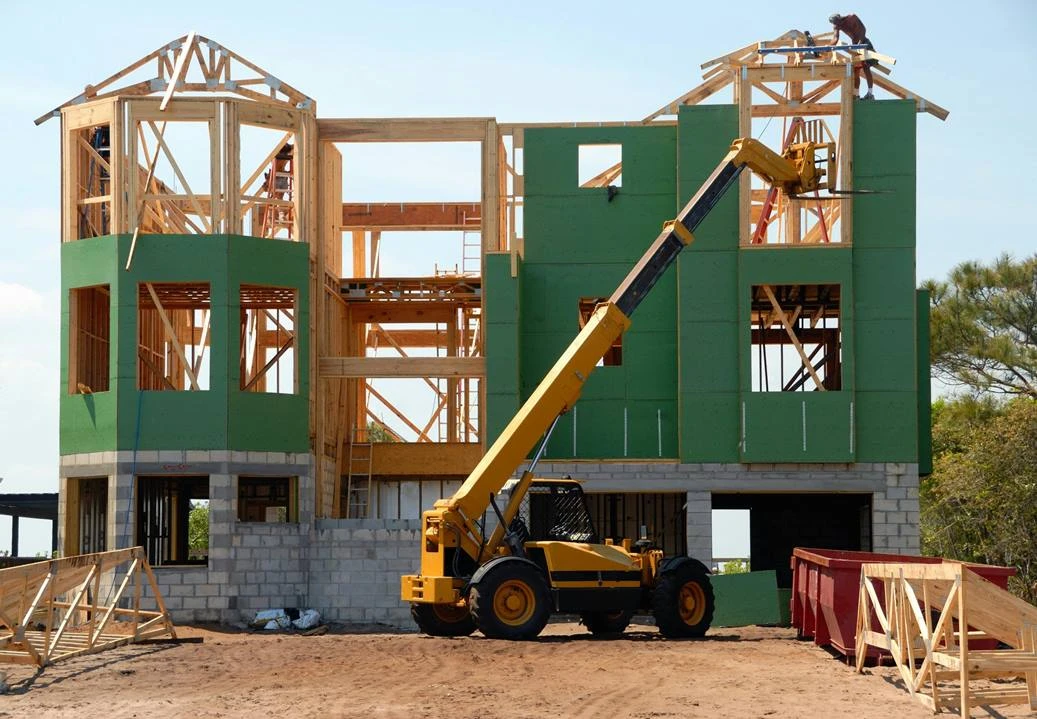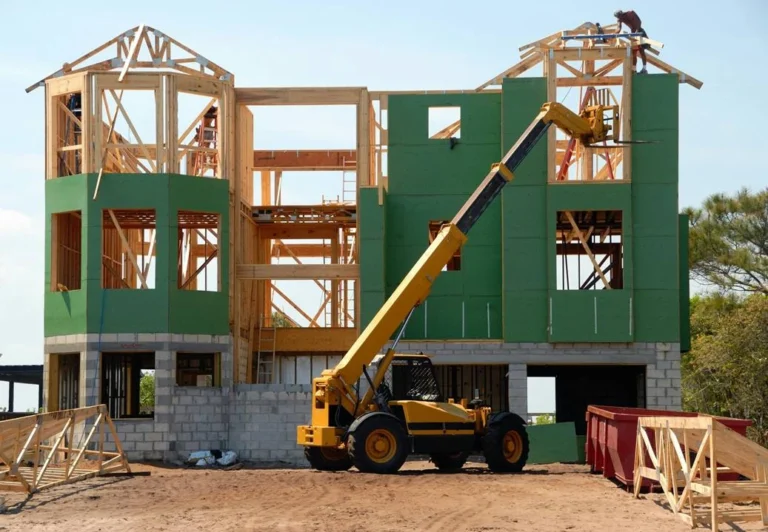
Construction sites are dynamic environments teeming with valuable equipment, materials and personnel. But they are also vulnerable to theft, vandalism, accidents and unauthorized access. As construction projects become larger and more complex, ensuring site security is paramount. Traditional methods such as manned guards and basic fencing are no longer sufficient to effectively mitigate risk. This is where technological means of surveillance, control and signaling come into play. These advanced technologies provide proactive, efficient and scalable solutions for securing construction sites.
A construction site security system combines surveillance technologies for real-time monitoring, control mechanisms to regulate access and operations, and signaling devices to alert stakeholders to potential threats. Together, these components create an integrated security ecosystem that not only deters criminal activity, but also improves safety and operational efficiency. This article examines how such systems are transforming site protection, covering their types, implementation strategies, benefits, challenges, and future trends. By adopting these innovations, construction managers can reduce losses, ensure regulatory compliance, and maintain a safe working environment.
The role of surveillance in site security
Surveillance is the cornerstone of modern security strategies, providing eyes and ears across vast and often remote construction sites. Closed circuit television (CCTV) systems have evolved from simple analog cameras to high-definition, AI-powered networks. These systems can cover multiple angles, including perimeter fences, entry points, material storage areas, and high-risk areas such as scaffolding or excavation sites.
A key advancement is the integration of artificial intelligence (AI) into surveillance. AI-enabled cameras can use motion analysis and facial recognition to detect unusual activity, such as loitering or unauthorized vehicle access. Thermal imaging cameras, for example, excel in low-light conditions and can detect the heat signatures of intruders even at night. Drones equipped with high-resolution cameras and GPS further extend surveillance capabilities, enabling aerial patrols over large areas. These unmanned aerial vehicles (UAVs) can be programmed for automated flights or remotely controlled, providing live feeds to a central command center.
Mobile surveillance units, such as solar-powered trailer-mounted cameras with wireless connectivity, provide flexibility for temporary locations. They transmit data over 4G/5G networks to cloud-based platforms for remote access via smartphones or computers. This real-time visibility enables security personnel to respond quickly to incidents, reducing response times from hours to minutes.
In addition to visual surveillance, audio surveillance also plays a role. Microphones integrated with cameras can detect sounds such as breaking glass or shouting, triggering alerts. However, privacy concerns must be addressed to ensure compliance with laws such as the General Data Protection Regulation (GDPR) in Europe or similar standards elsewhere.
Surveillance not only deters crime, but also aids in post-incident investigations. Recorded footage provides evidence for insurance claims or legal proceedings. According to industry reports, sites with comprehensive surveillance experience up to 50% fewer thefts than those without.
Control Systems: Regulate access and operations
Control technologies ensure that only authorized people and vehicles enter and operate within the site, minimizing risks from internal and external threats. Access Control Systems (ACS) are fundamental, ranging from simple keypads to sophisticated biometric scanners.
Radio frequency identification (RFID) badges or key fobs allow workers to check in and out, logging their presence for payroll and security tracking. Biometric systems, which use fingerprints, iris scans or facial recognition, add a layer of security by preventing the sharing of credentials. They are particularly useful for high-security projects, such as infrastructure developments near sensitive areas.
Vehicle access control extends this to gates equipped with Automatic Number Plate Recognition (ANPR) cameras. These systems check license plates against approved lists and open barriers only for verified vehicles. Geofencing using GPS creates virtual perimeters; if a piece of heavy equipment such as a crane moves outside its designated zone, it can be remotely disabled to prevent theft.
Integration with Building Information Modeling (BIM) software allows control systems to synchronize with project schedules. For example, access to certain areas can be restricted during hazardous operations such as blasting or welding. Smart locks on storage bins and tool sheds further secure assets, with audit trails recording every access attempt.
Internet of Things (IoT) devices improve control by monitoring environmental factors. Sensors track temperature, humidity, and structural integrity, controlling automated responses such as activating ventilation or stopping operations when unsafe conditions are detected.
Implementing control systems requires careful planning, including user training and redundancy measures such as backup power. When integrated with surveillance, they create a seamless security loop: a detected breach triggers an access lockdown while alerting authorities.
Signaling Technologies: Early Warning and Response
Signaling systems are the alarm bells of site security, providing immediate notification of anomalies. Intrusion detection sensors, such as infrared beams or vibration detectors on fences, signal unauthorized entry attempts. These can be wired or wireless, with the latter offering easier installation on developing sites.
Perimeter intrusion detection systems (PIDS) use fiber-optic cables buried along fences to detect climbing or cutting. Upon detection, they trigger audible alarms, strobe lights or silent alerts to security teams. Environmental sensors monitor for fire, gas leaks, or flooding and integrate with signaling to evacuate personnel via sirens or automated announcements.
Wireless panic buttons worn by workers can immediately signal emergencies such as accidents or medical problems. They connect to a central system that dispatches help and notifies supervisors.
Advanced signaling incorporates AI to reduce false alarms. Machine learning algorithms distinguish between a wandering animal and a human intruder, minimizing unnecessary responses. Integration with mobile applications enables push notifications to keep off-site managers informed.
Signaling also supports compliance with workplace safety standards. In the U.S., for example, OSHA regulations require effective emergency signaling; non-compliance can result in fines.
Case studies illustrate the impact of signaling. On a major urban development project, vibration sensors detected a fence breach, triggering lights and alarms that deterred thieves and prevented the loss of $100,000 in equipment.
Integrating monitoring, control and signaling
The true power of these technologies comes from their integration. A unified security management system (USMS) combines data from surveillance cameras, access logs, and sensor alerts into a single dashboard. This holistic view enables predictive analytics: patterns of suspicious activity can predict risk and enable preemptive action.
Cloud-based platforms facilitate this integration and provide scalability for projects of all sizes. For example, a small residential building might use basic IP cameras and alarms, while a megaproject like a skyscraper might use AI-driven networks with drone support.
Implementation involves site assessments to identify vulnerabilities, followed by customized deployments. Costs vary, with basic installations starting at $5,000, while comprehensive systems can exceed $100,000. But ROI comes from reduced theft (estimated at $1 billion annually in the U.S. construction industry) and insurance premiums.
Challenges include cybersecurity risks – hackers could disable systems – so encryption and regular updates are essential. Power outages can be mitigated with solar backups, and harsh weather requires rugged equipment.
Training is critical; workers must understand how to use badges or respond to alarms. Regular drills ensure preparedness.
Benefits and case studies
The benefits are many. Security enhancements reduce financial losses from theft and vandalism, which plague 90% of construction sites worldwide. Safety is improved with fewer accidents due to monitored hazards. Efficiency gains come from automated controls, freeing guards for higher-value tasks.
One notable case is London’s Crossrail project, where integrated CCTV, access biometrics and sensor alarms secured a 118-km network of tunnels. This setup prevented numerous break-ins and kept workers safe amid complex operations.
In Australia, a mining site used drones for surveillance and geofencing to control equipment, reducing theft by 70%. Signaling sensors detected environmental risks and averted potential disasters.
These examples illustrate how technology can transform reactive security into proactive defense.
Future trends in jobsite safety
Looking ahead, emerging technologies promise even greater advances. 5G networks will enable ultra-low latency video streaming, improving real-time response. AI and machine learning will evolve to predict threats based on historical data.
Autonomous robots might patrol sites, combining surveillance and signaling in mobile units. Blockchain could secure access logs, ensuring tamper-proof records.
Sustainability is a growing focus; solar-powered devices reduce environmental impact. Regulatory pressures, such as stricter privacy laws, will drive ethical implementations.
By 2030, the global building security market is expected to reach $15 billion, driven by these innovations.
Bottom line
Securing construction sites with technology that monitors, controls and signals is not only a necessity, but a strategic advantage. These tools provide comprehensive protection, from deterring intruders to ensuring worker safety. As projects grow in size and complexity, the use of integrated systems will be key to success. Construction companies that invest in these technologies today will reap the benefits of reduced risk, cost savings, and enhanced reputation. Ultimately, a safe site is a productive site, paving the way for innovation in the built environment.






